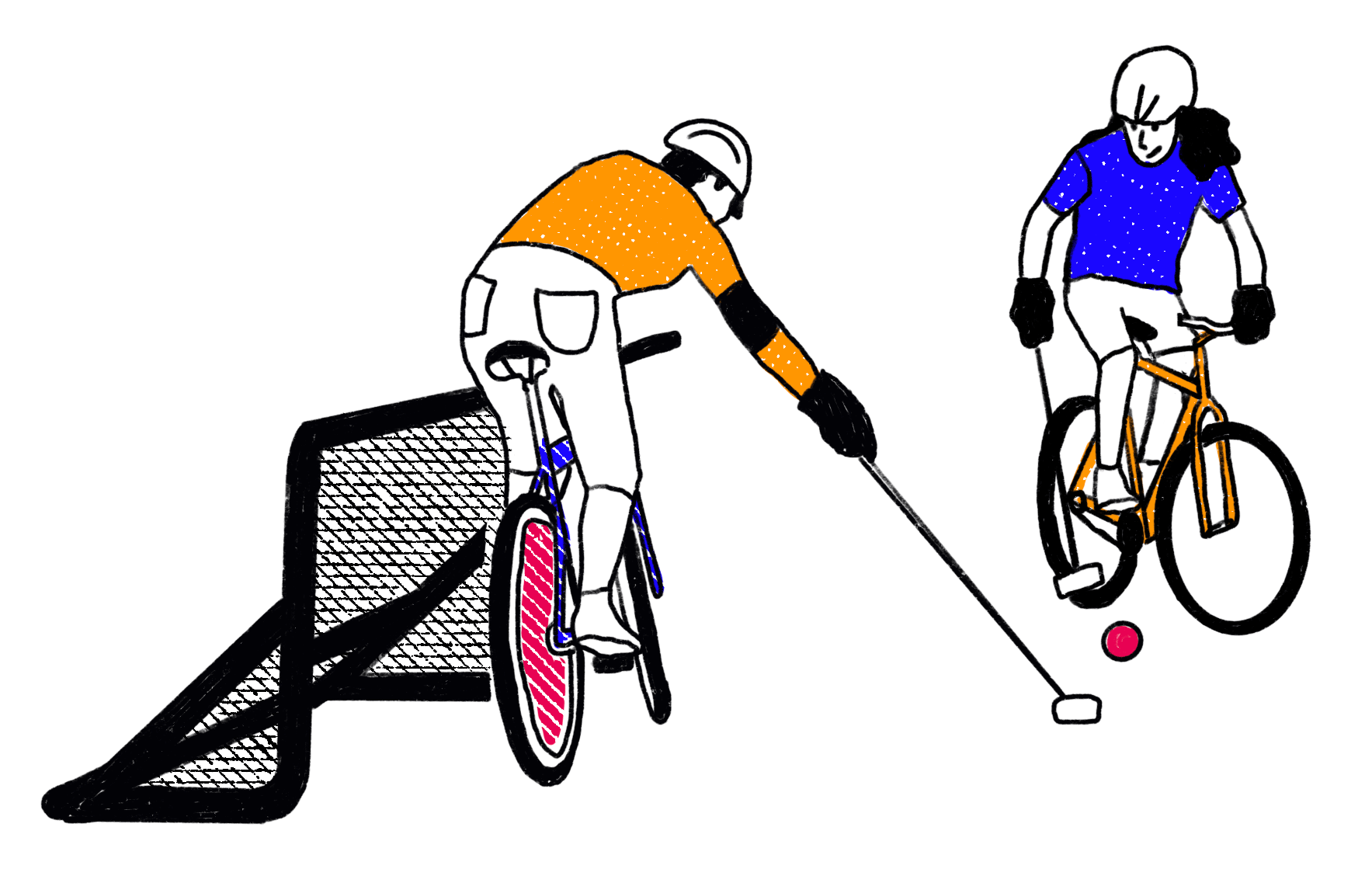The sport
Bike polo is exactly what you think it is, but on bikes, not horses.
Two teams of three ride bicycles and use mallets to strike a small ball into a goal. Games last for a set amount of 10-15 minutes.
Originating in Ireland in 1891, traditional bike polo is played on grass courts. Modern hardcourt bike polo has roots in the early 2000s in Seattle. Bike messengers would play during down time between deliveries. Hardcourt bike polo spread internationally and is played in over 30 countries. The first world championships were held in Toronto in 2008!









